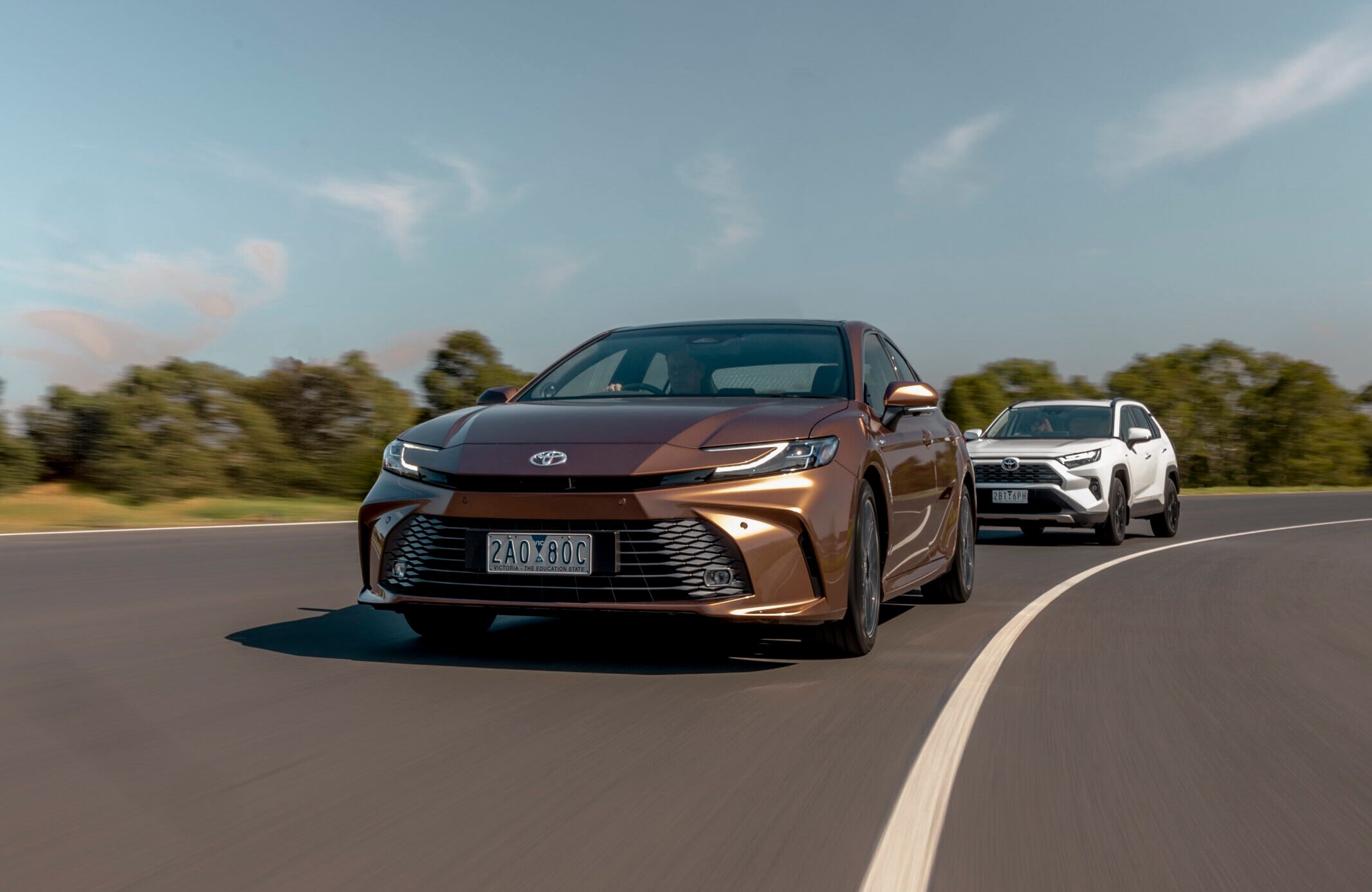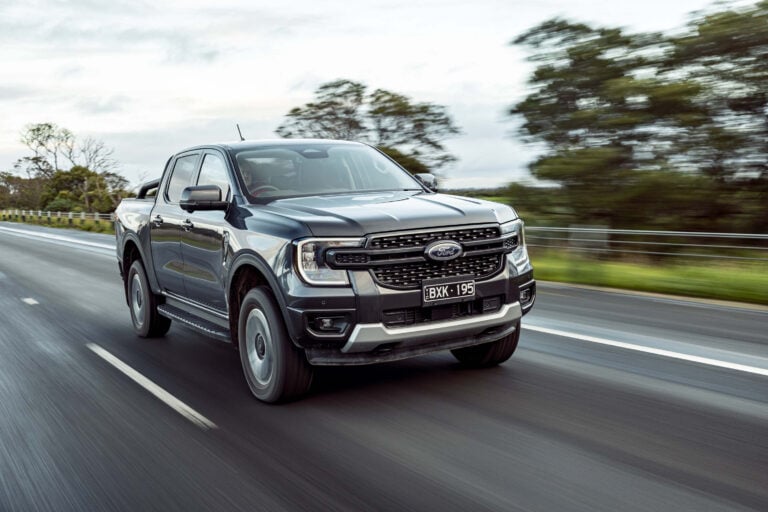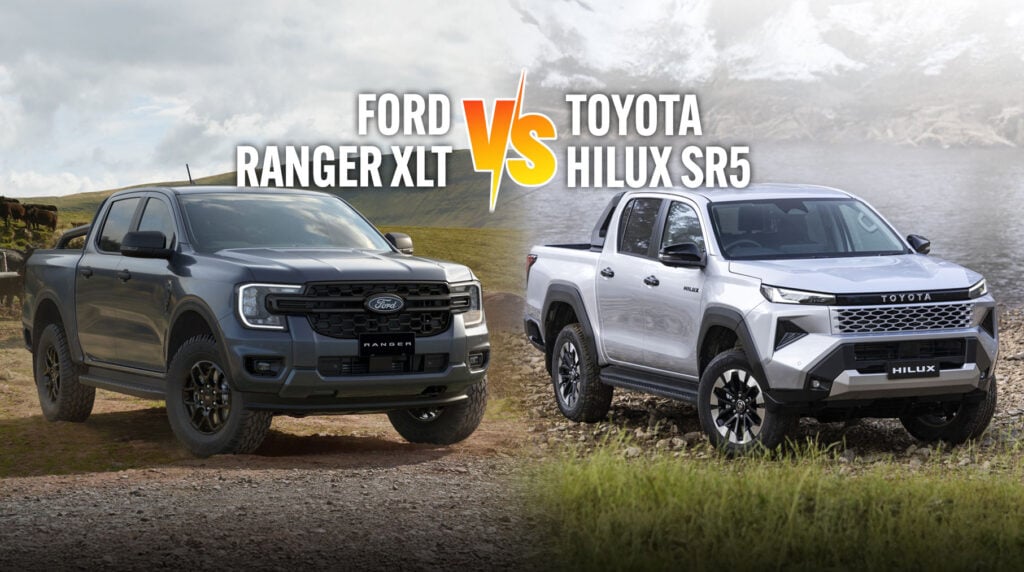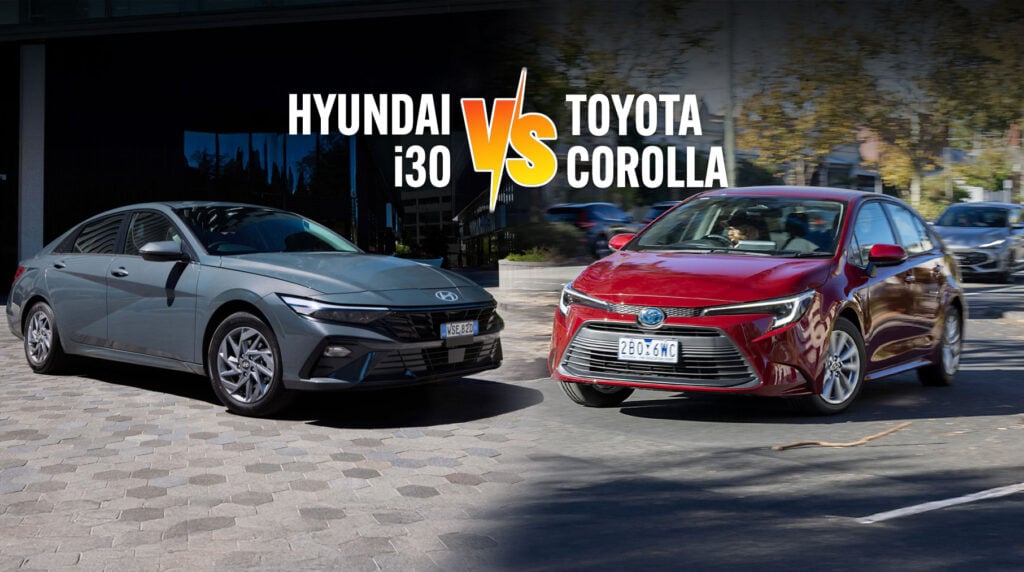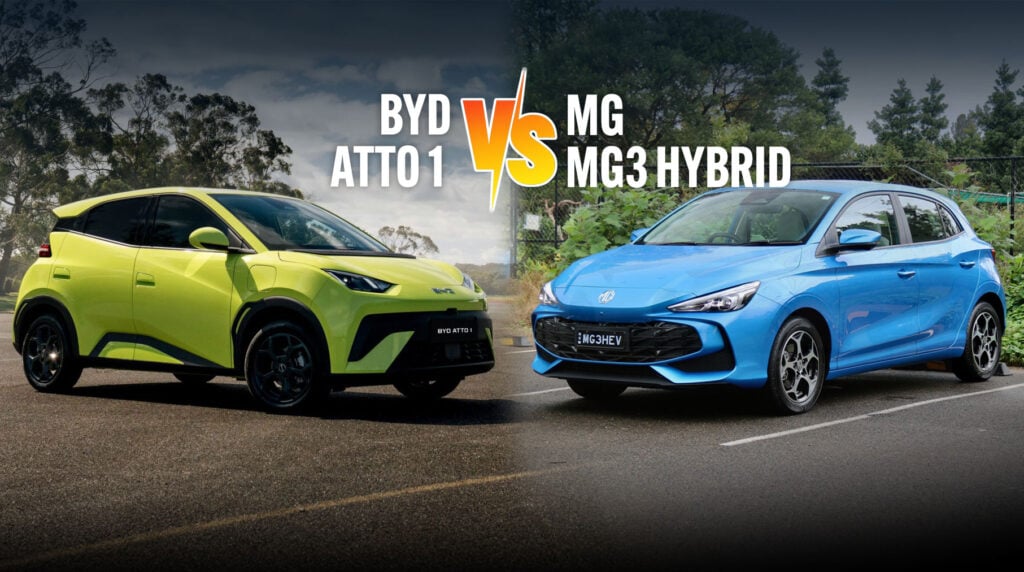You could see the mild panic in their eyes.
What was assured confidence was giving way to creeping doubt. The current and ex-editors who formed the Wheels Car Of The Year 2024 jury were, at the cull of the three finalists, reasonably sure that the hugely exciting Hyundai Ioniq 5 N was going to win, and by some margin. Then, after the final round of drives, you could see chinks in the armour.
As judge after judge climbed out of the Toyota Camry and heaped praise upon it, maybe COTY wasn’t such a done deal after all. “Who needs a Lexus?”, asked Peter Robinson, impressed by the big sedan’s sophistication and value. I wasn’t too worried about the Camry winning. After all, when the final three were an EV, a family SUV and a Camry, whatever happened there were going to be some spittle-flecked detractors. It’s just what happens at COTY where only one vehicle can win. In the end, the Ioniq did enough to snag the win, but make no mistake, the unprepossessing Camry was the car that had shifted itself furthest against the expectations of this experienced jury.
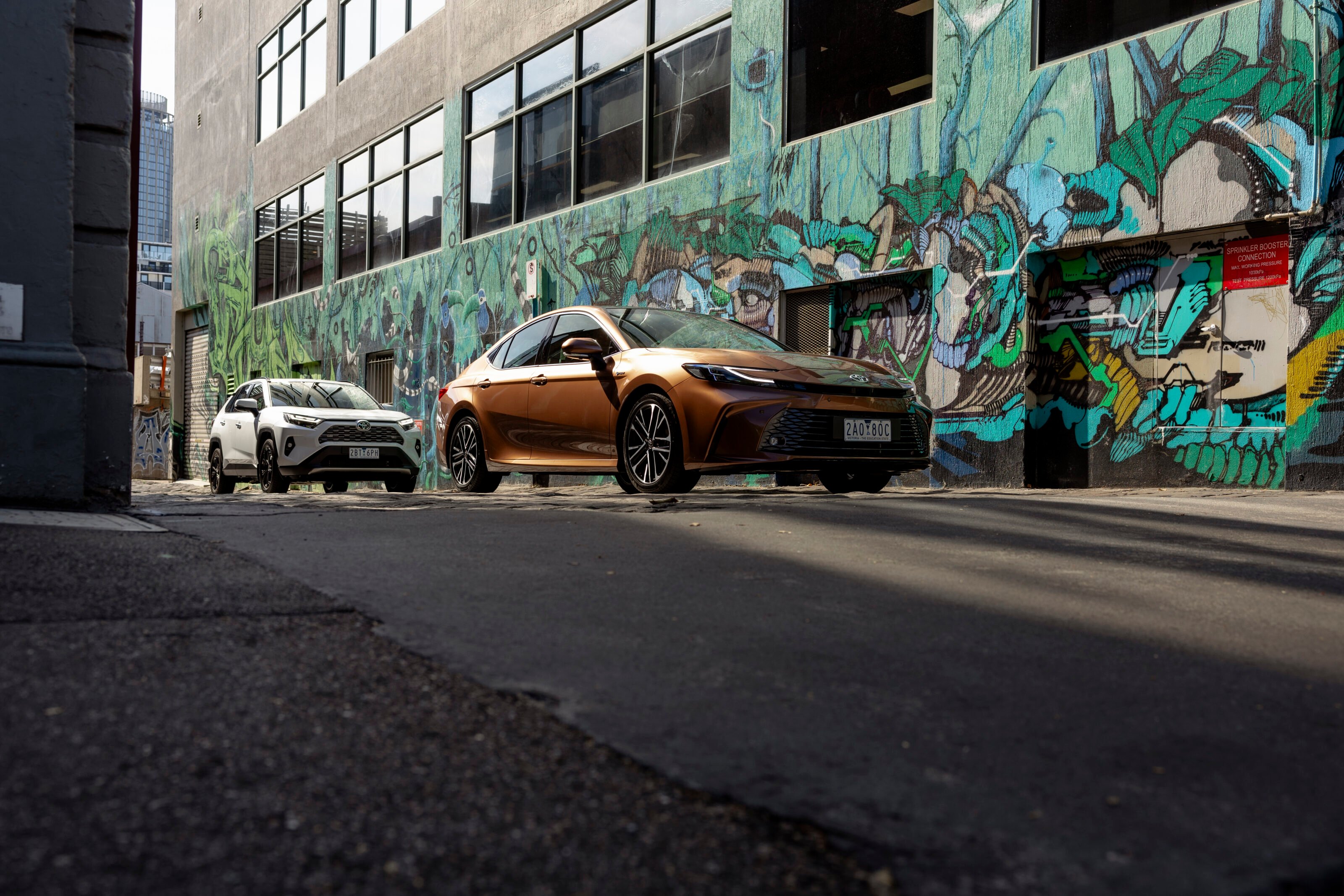
I was reminded of COTY 2020 when the Toyota RAV4 kept creeping through the standings. In truth, had we only judged the hybrid version, it would likely have been a finalist, but on that occasion it was let down by the 2.5-litre petrol variant dubbed by some ‘the noisy nail’. A spell in the Wheels garage only underlined what a brilliant all-rounder the RAV4 Hybrid was, and we’re far from surprised to see it claim the crown of Australia’s best-selling SUV.
But the RAV4 never made the COTY podium and the Camry did. In 2025, Toyota expects the Camry to be outsold by the RAV4 by nine units to one among private buyers in Australia. All of this raises a rather obvious question. Are we all buying the wrong car?
Brand wars
In an attempt to answer that question, we’ve put the two head to head. Representing the old school is the flagship Camry SL Hybrid, packed with kit and yours for the princely RRP of $53,990. Facing it is the more familiar face of the RAV4 Cruiser Hybrid, also front-wheel drive, and wearing a $51,410 sticker price.
The fifth-gen, or XA50, RAV4 was first shown way back in March 2018 at the New York International Auto Show, and launched locally in May 2019. It rode on a version of the TNGA-K platform as used by the existing Camry, albeit on a shorter 2690mm wheelbase versus the sedan’s rather more luxurious 2820mm measurement. It got off to a strong start, instantly establishing itself as Australia’s medium SUV of choice, selling 38,537 units in its first full year on sale in 2020. By contrast, the next-best selling rival was the Mazda CX-5, languishing way behind at 21,979 registrations.
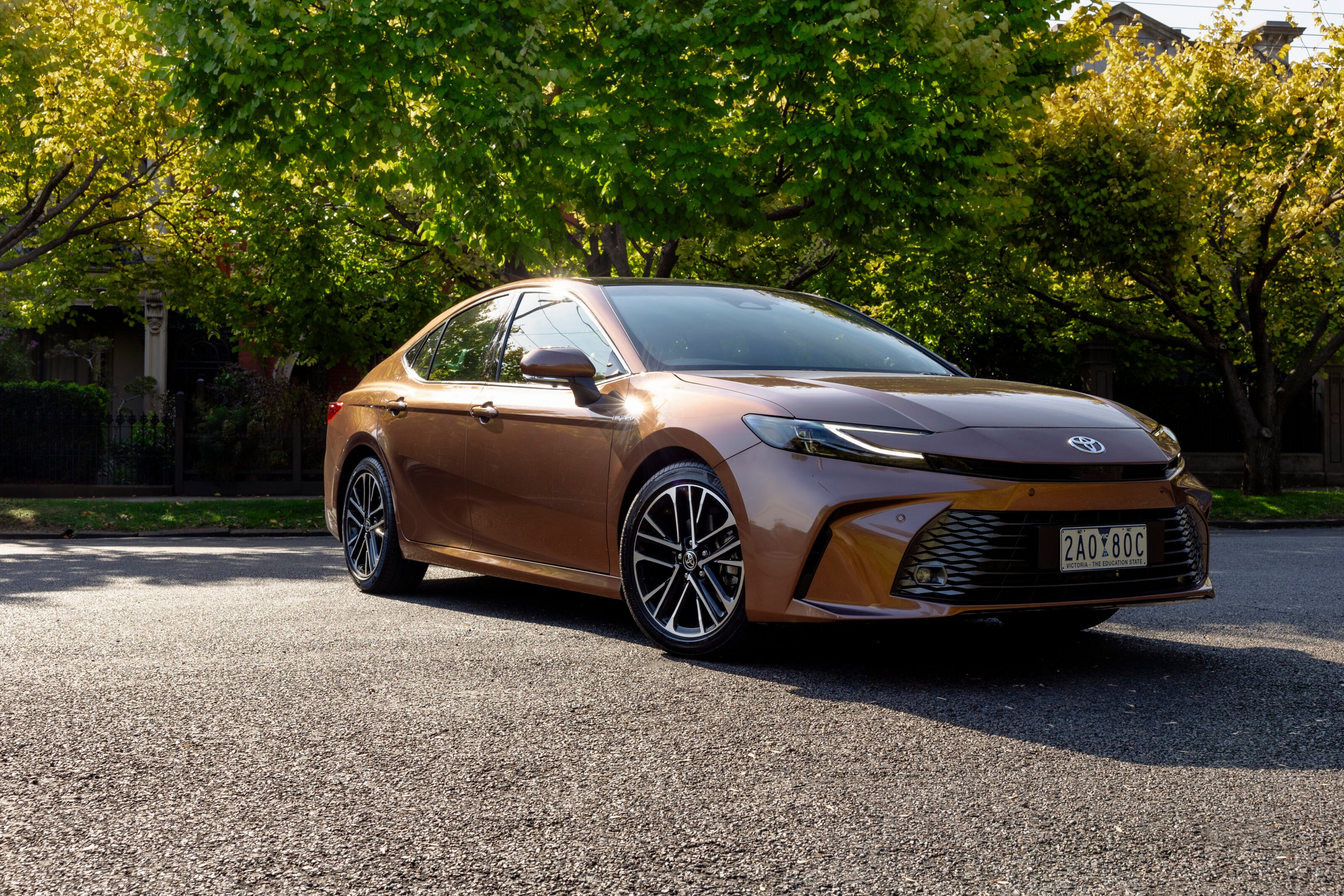
A modest facelift followed in 2021, with new wheels and headlights fitted, but the story stayed much the same, RAV4 beating CX-5 by a hefty margin. Then things changed. Supply chain issues meant that getting hold of a RAV4 was only marginally easier than finding Lasseter’s Reef and, as a result, Toyota edged out the CX-5 by a mere 7783 units in the 2022 figures. That supply-affected theme continued into 2023 and it was only when that situation rectified in 2024 that we got to see the RAV4’s true dominance. Last year, Toyota shifted 58,718 cars, more than double the number of its nearest competitor, the Mitsubishi Outlander. Australia’s favourite SUV? You’re looking at it right here. Heck, it’s the biggest selling vehicle Down Under if you choose to exclude dual-cab utes.
It’s easy to see why the formula works. Choose a RAV4 Hybrid and you’re getting a vehicle that’s reliable, easy to drive, practical, reasonably good looking and supremely economical. It’s as close to the template of the perfect family vehicle as we’ve probably ever come across, as evidenced by its popularity. So is it reasonable to expect that track record of success to be usurped by what many will dismiss as a glorified Uber?
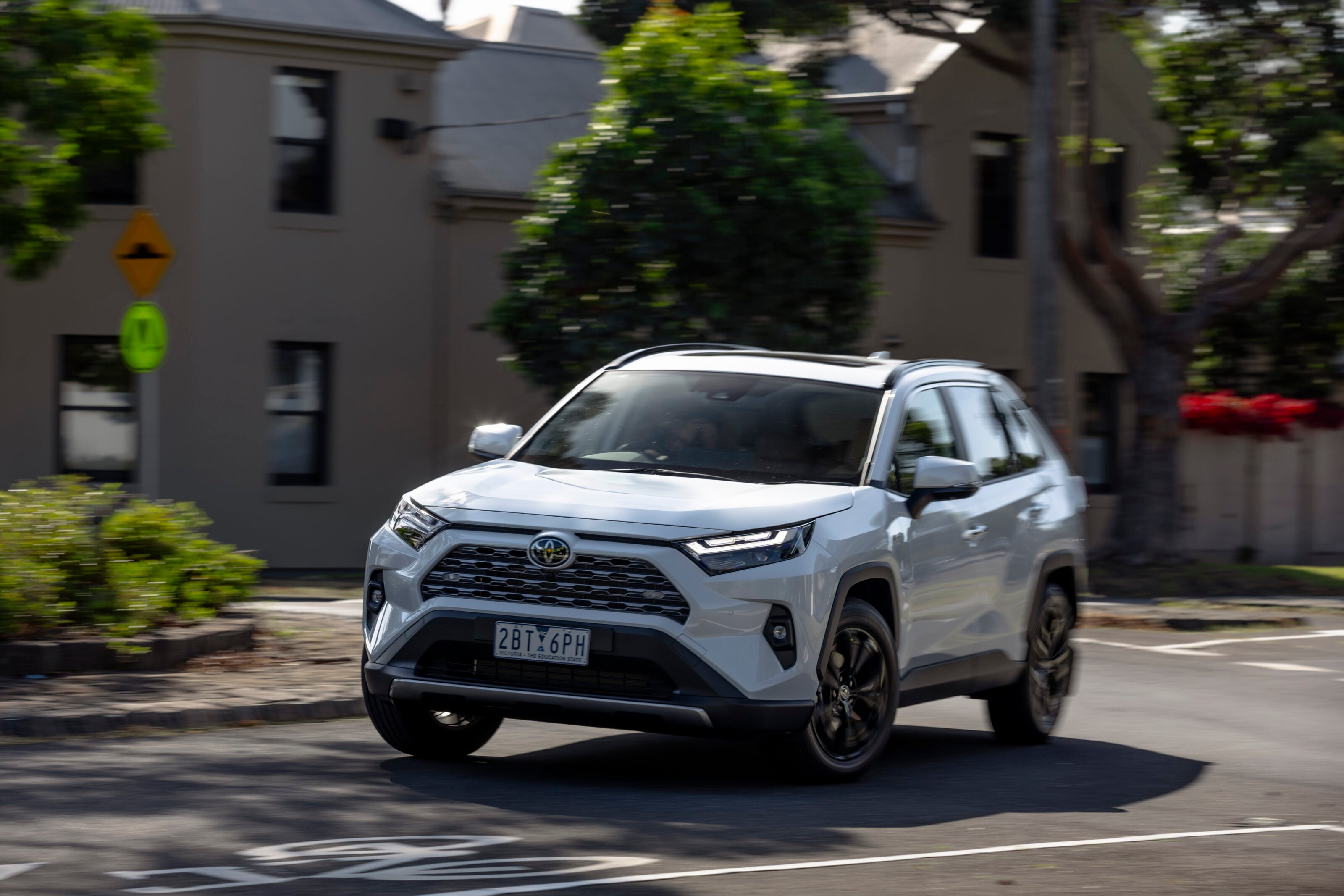
No. No, it isn’t. But here’s the thing. The RAV4 is, by today’s standards, quite an old car. It’s no great secret that a replacement is well in the works, with prototypes spotted road testing. By the time you read this magazine, it may even have been unveiled at the Shanghai show, and then it would likely be a 12-month hiatus until production modes arrive in Aussie showrooms. In other words, this car still has around a year of life left in it before it gets hooked.
By contrast, the current XV80-gen Camry is a newer and fresher thing. It is, by the strictest definition, a refresh of the previous XV70 model, with some parts such as the doors and the roof line carried over, but Toyota has gone through this ninth-gen Camry with a fanatical attention to detail, improving so much about it that it feels a very different proposition.
Aside from the fact that you can no longer buy a Camry in Japan, the big change is that there’s now no V6 option, with just one engine option – the 2.5-litre four-cylinder hybrid. Australia gets a three-car range running through Ascent, Ascent Sport and this flagship SL model. The value proposition is impressive, with the entry-level car starting at $39,990. Let’s just pause on that for a moment. Less than $40k is buying you a 170kW hybrid that’s built better than a bank vault. You’d pay $55k for a 135kW Honda Civic Hybrid. By virtually any measure, the Camry delivers a heck of a lot of bang for your buck.
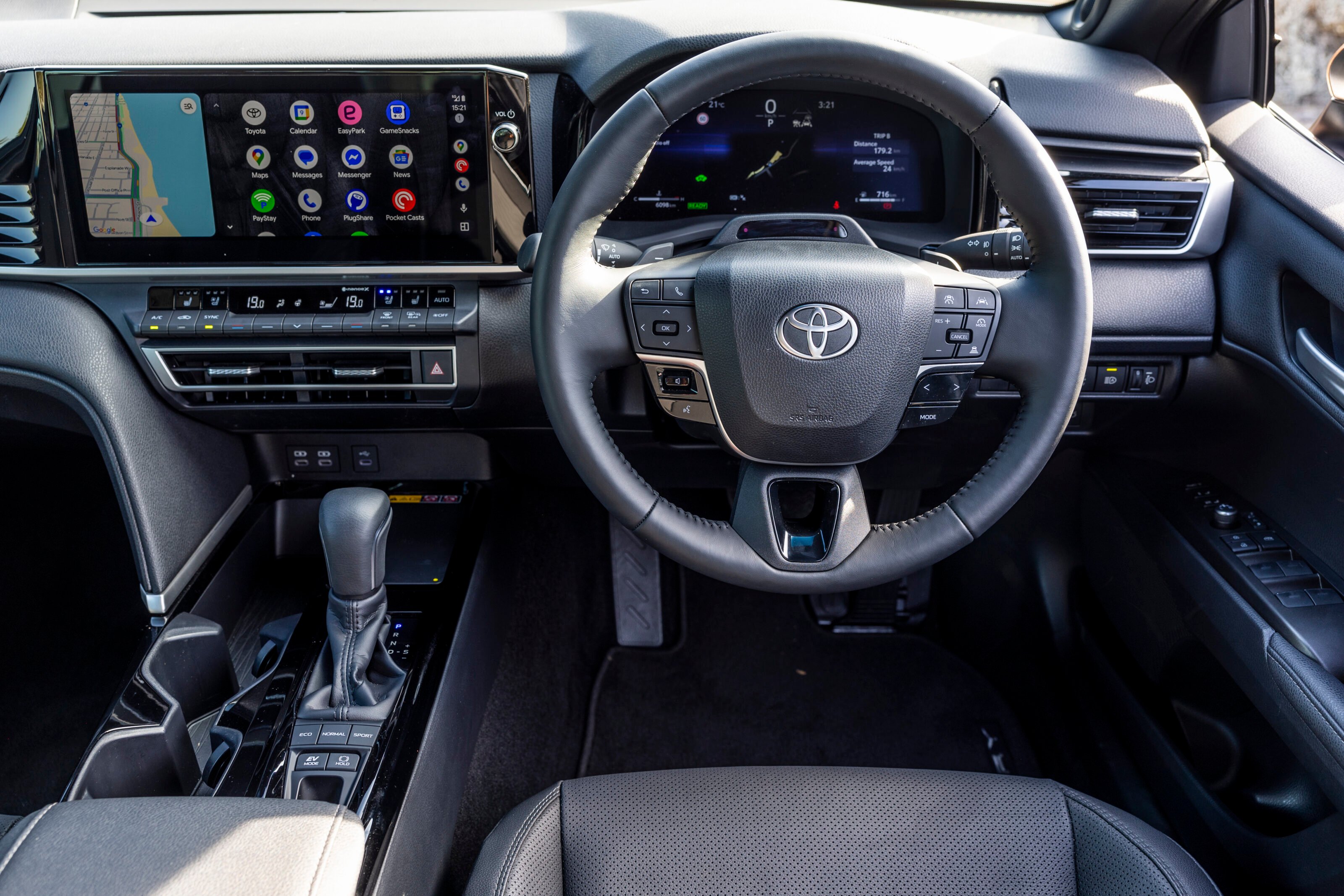
So what has Toyota done to this latest Camry to differentiate it from its predecessor? Aside from the obvious changes to the exterior styling, beneath the skin Toyota endeavoured to improve four key areas: comfort, response, efficiency and safety. There haven’t been wholesale changes to the fundamentals with the car still suspended by a pair of MacPherson struts up front with a multi-link rear end, but the bushings have been altered, and the springs and dampers tuned to reduce noise, improve body control and deliver a plusher ride.
The steering has come in for some remedial surgery, with a more rigid steering box and column for an improved response, and the software for the electric assistance has been finessed. And the braking system has been re-engineered to improve both pedal feel and control, with the transition from re-gen to friction braking now so smooth as to be almost imperceptible.
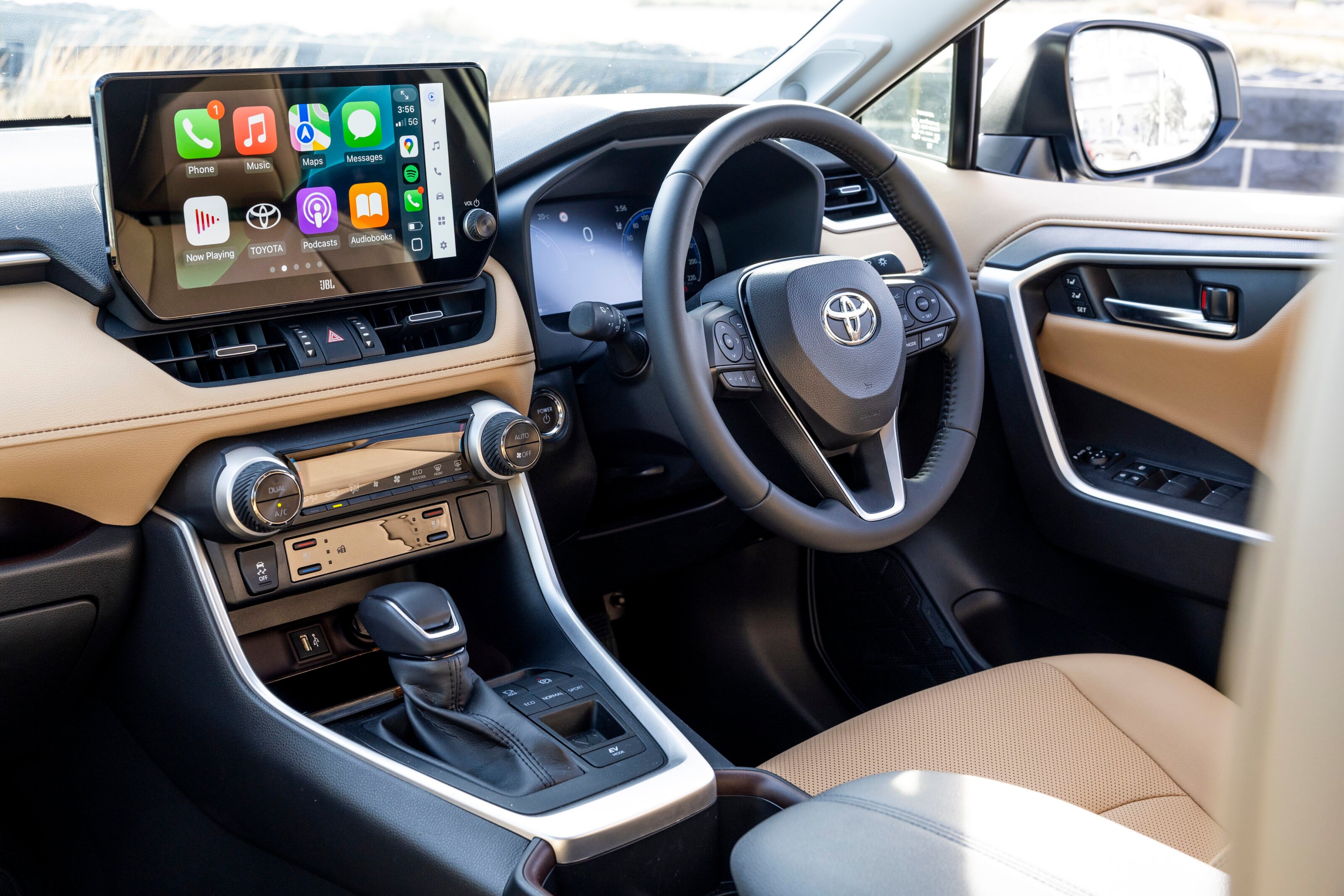
A 4.0Ah lithium-ion battery resides under the rear seats and has been treated to an improved cooling system, while the motor-generator mounted on the front axle gets six rather than three magnets. A lighter, simpler, dry-sumped transaxle features revised gearing and is bathed in lighter-grade oil for better efficiency. As a result of this suite of improvements, the Camry develops 10kW more than its predecessor yet fuel economy is improved to a claimed 4.0L/100km. On test around the city, the Camry supped 4.7L/100km with the RAV4 netting 5.9L/100km.
Inside, Toyota has striven to improve the impression of quality, although there’s still a muddle of fonts and hard plastics in the lower cabin that feels fairly mainstream. The fabric that runs across the step in the dash and the fluted passenger-side vents are a nice touch, and there’s a huge amount of oddments space, including a vast centre bin and multiple cupholders. You’re also extremely well provisioned for USB-C slots with three up front and two in the rear. I’m not a big fan of the fingerprint and scratch-prone piano black fillets around the centre console though.
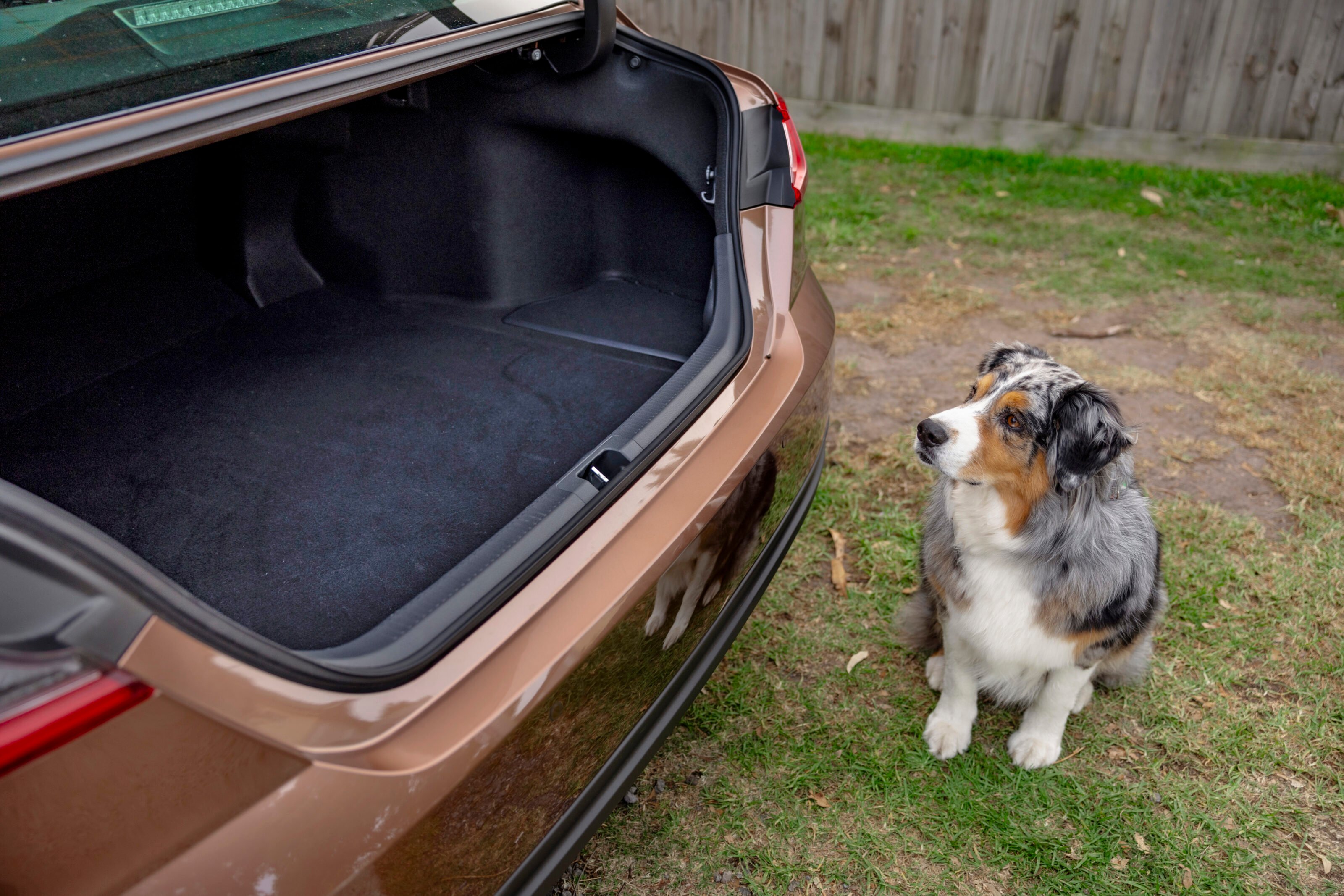
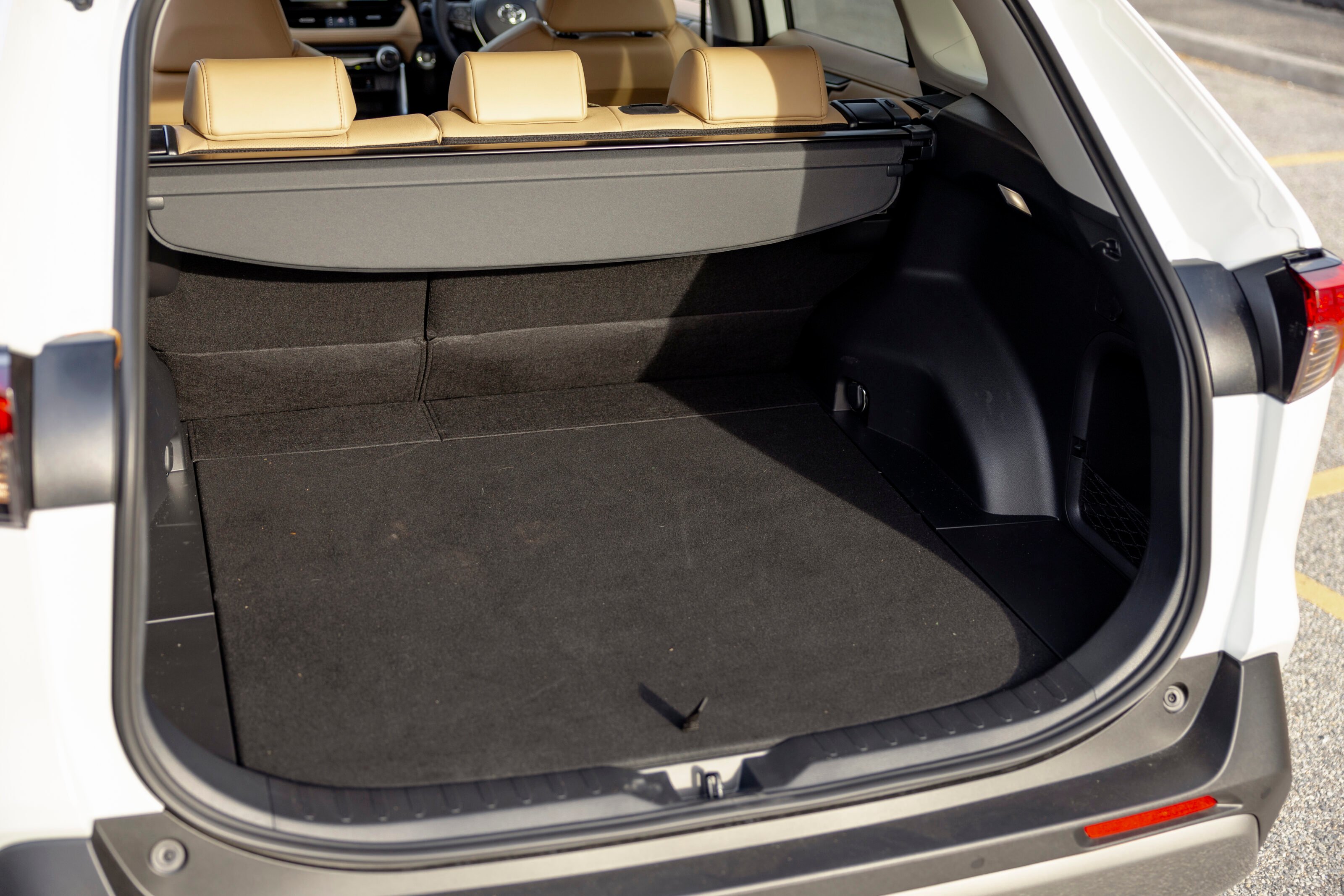
This SL version gets a stack of kit thrown at it, including 18-inch alloys, leather trim for the seats, a panoramic glass roof, a digital rear-view mirror, rain-sensing wipers, a heated steering wheel, a head-up display and a nine speaker JBL stereo. It even features paddle shifters on the steering wheel, which seem superfluous in this car. While it’s nice to be in a Camry that feels so plush, I’m not sure that this is the sweet spot in the range. That’s probably the mid-spec Ascent Sport, which is 35 per cent cheaper and does without one feature that hobbles this SL version.
The dual-pane sunroof in the SL trim is a truly awful addition. Not only does it add weight and complexity, it robs you of fully nine centimetres of headroom. Had this version of the Camry been at COTY, this packaging shortfall would have likely relegated it from the top three. In the front seats, my head brushes the roof, while in the rear of the car I feel like Captain Kyphosis, so hunched am I from a lack of headroom. This wasn’t apparent in the far more accommodating Ascent Sport.
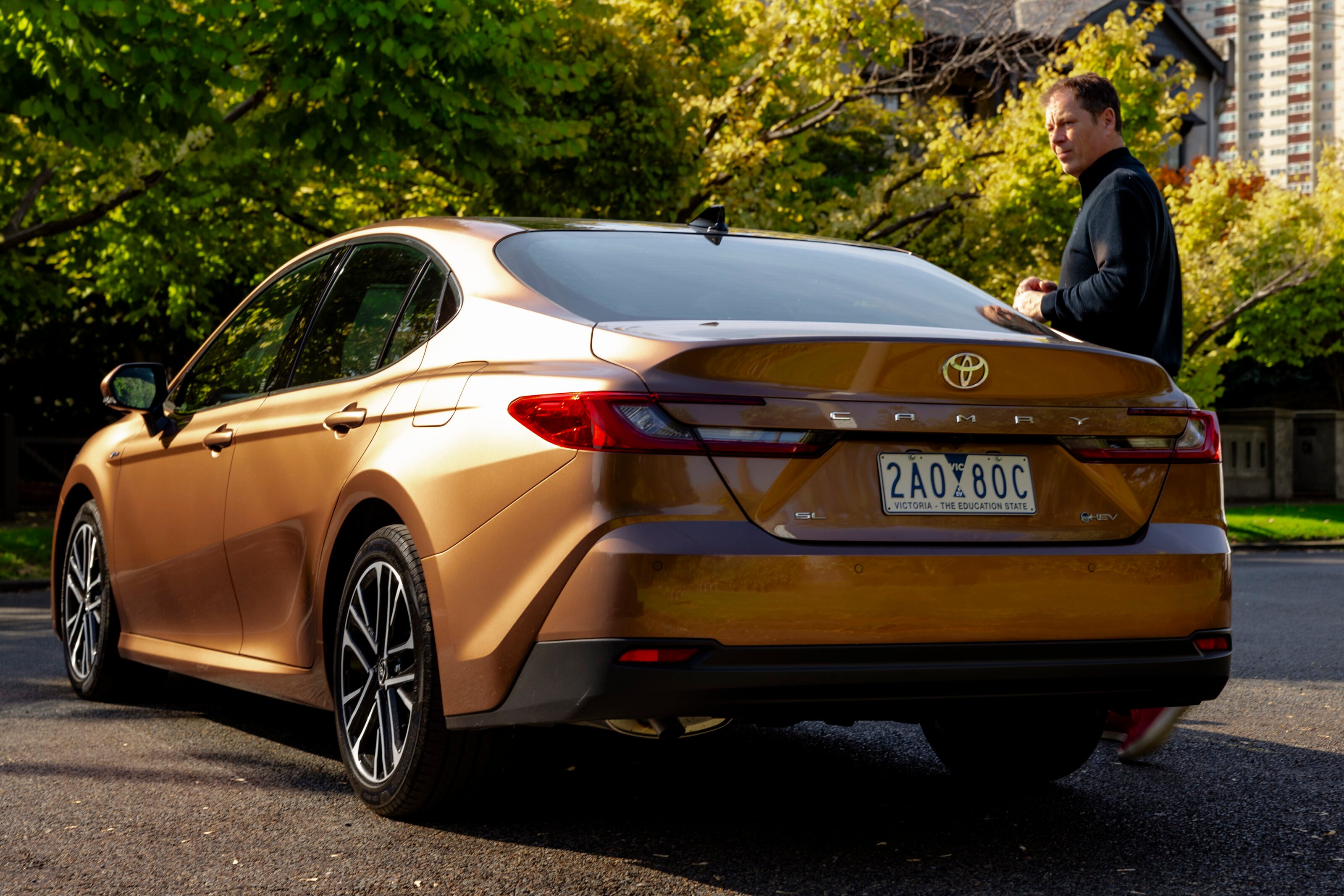
By contrast, the RAV4 feels far airier, with more headroom both front and rear. The pale leather seat trim adds to the feeling of expansiveness inside, a sharp contrast to the Camry’s unrelentingly dark interior colour palette. Taking headroom out of the equation, the Camry scores with 28mm more front leg room (1069 vs 1041mm) and a mere 5mm more rear leg room (965 vs 960mm). The rear doors also open wider than the RAV4, with a more generous foot swing area. The RAV4 counters with 18mm more rear shoulder room (1414 vs 1432mm) and squeaks ahead in front shoulder room (1465 vs 1468mm).
Move round to the back, and the boots aren’t too far apart in terms of carrying capacity. The Camry offers 524 litres while the RAV4 delivers 542 litres, with both offering a 60/40 split rear bench. In other words, the Camry offers 97 per cent of the RAV4’s carrying capacity and, because the boot floor is far bigger, offers a benefit there. After all, who wants to stack grocery bags on top of other bags? As long as you can post the item through the 1250x480mm boot aperture, you’ll find that the boot extends a massive 1170mm back before it reaches the rear seats, compared to the smaller 1020mm depth from the RAV4’s loading lip to the back of its non-sliding rear bench. If you’re planning on utilising the rear seats, the Camry is, for the most part, the more practical solution.
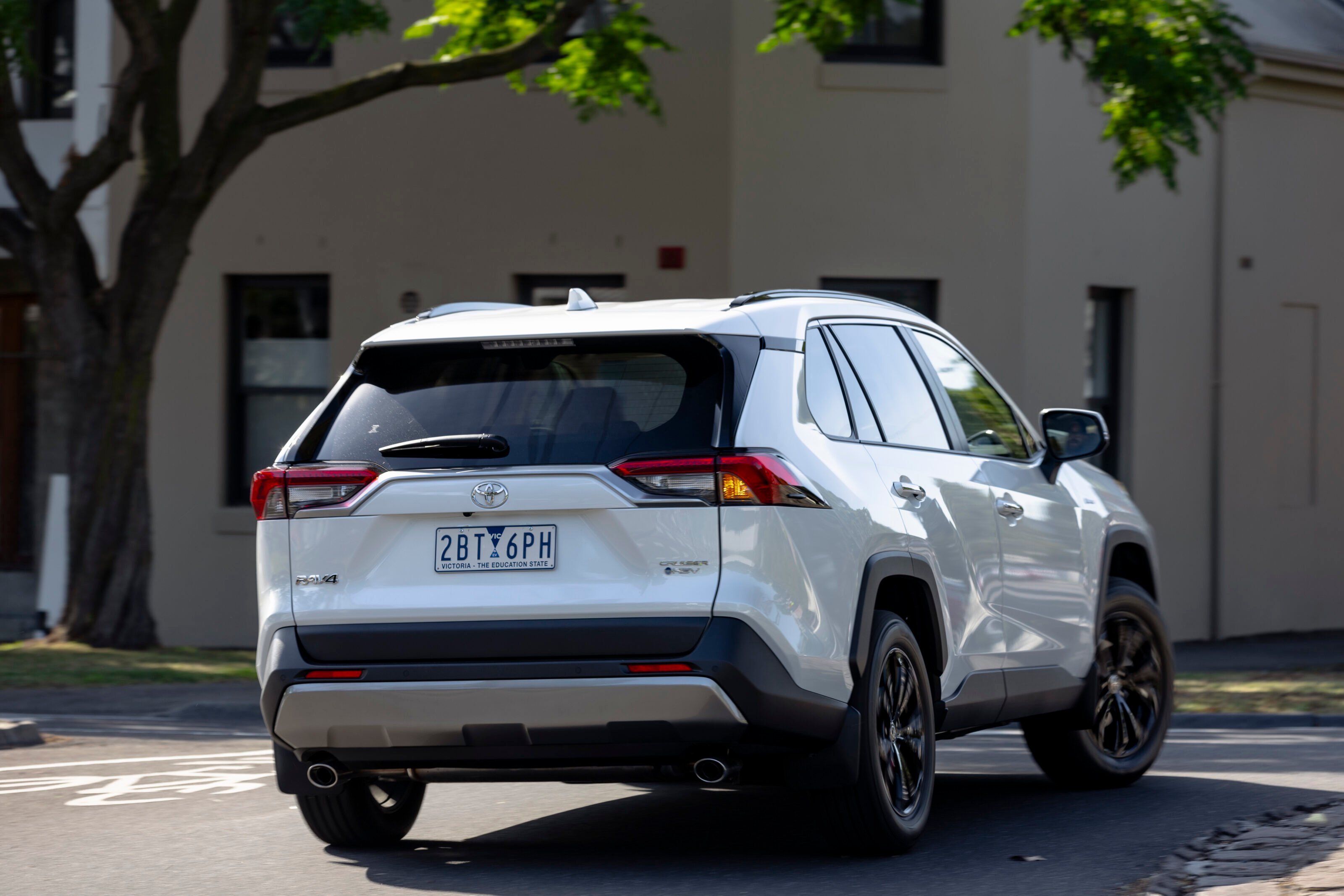
Flop the rear bench down in the RAV4 and its obvious advantage becomes apparent. Suddenly you have a massive 1690 litres of space in which to haul bikes, furniture, dogs or whatever takes your fancy. And this is the crux of this whole comparison. Be honest. How often will you use that space?
There will be some for whom this is an absolute non-negotiable, and that’s fine. For many of us, however, it’s the sort of excess capacity that we purchase just in case we may one day need it. Yet if we’re honest with ourselves, chances are we won’t. It’s a beguiling sell and plays on that fear of missing out that product planners and marketers have slyly tapped into.
Nuts and bolts
You see, the alternative is to choose the Camry and you’re treated to a vehicle that is not only sweeter to drive, which you’ll feel all of the time, but is also more fuel efficient. For the typical Aussie motorist that would translate to 105 litres of fuel saved every year. A quick Google search found that you can rent a hybrid RAV4 for $74 a day. So you could conceivably rent a RAV4 for the three days of the year when you really needed to pack it to the ceiling with large items and then spend the other 362 days of the year in something quieter, smoother, better equipped and which is better for the environment. It’s worth remembering that the Camry demands premium fuel whereas the RAV4 doesn’t.
The respective sales figures of the two vehicles will demonstrate that most buyers are prepared to forgo all of that, which seems a shame. It’s also a shame that the perceived safety benefits of sitting in a higher, heavier vehicle aren’t balanced against those of sitting in a more agile vehicle with better braking performance that’s less likely to be involved in an accident in the first instance.
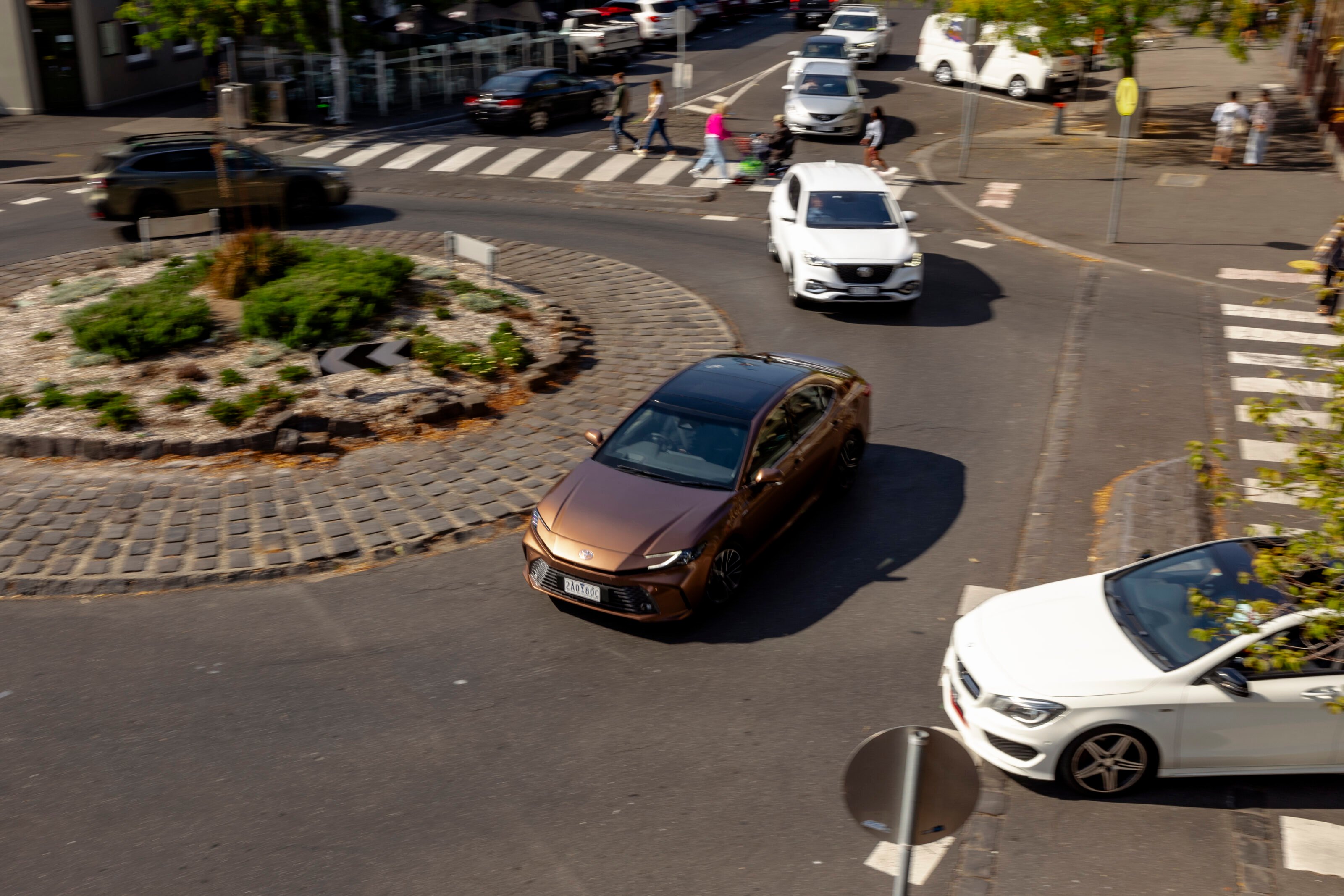
In truth, they’re both pleasant vehicles to drive. The RAV4 still feels a smart piece of engineering, and its raised seating position and smaller turning circle (thanks to the shorter wheelbase for that) is a boon in town, as is the fact that it’s 285mm shorter overall, making it a little easier to parallel park.
The Camry counters with a more modern suite of safety systems, which hinges around a better camera sensor, a superior forward millimetre-wave radar sensor and the additional reassurance of two radar sensors scanning the outer front and sides of the car. Compared with the RAV4’s rather rudimentary sensor suite, it’s night and day better. As indeed is the infotainment system. As long as you opt for anything but the base variant, the Camry gets a big 12.3-inch colour touchscreen that puts the RAV4’s rather shonky JBL-branded item – with its maddening facility for dropping your Bluetooth phone mirroring connection – to shame. That’s before we get into how far superior items such as the Camry’s wireless phone charger or its LED headlights are.
Much of these arguments for modernity will be levelled when the new RAV4 appears but, as we mentioned earlier, that’s at least a year away. For now, the Camry is the better pick on almost every score. There is a practical edge to the RAV4 that’s appealing. The hip height of the rear bench makes loading and unloading kids easier, and the hatch allows you to easily carry large items and dogs. For a vehicle that’s been six years in market it holds up really well.
Should you not have to lug small kids and dogs about, think seriously about whether the compromises that the RAV4 imposes are worth those few occasions when you’ll need to carry a bulky item. In short, we’re hobbling how our car drives every day for an occurrence that may or may not materialise. Data shows that we grow into SUVs at child-rearing age, with only 9.5 percent of 18-24s choosing them, while 36.1 percent of 35-44s own them, that figure then receding to 22 percent of those aged 65+. That suggests that we don’t want SUVs if we don’t need them for family duties which, in and of itself, is encouraging.
The sedan was Australia’s car of choice for many decades and then something changed. Some of us became sold on the promise of an active lifestyle we never actually lived. We paid for capability that we never used. We believed we were buying better when, for many of us, we were merely deluding ourselves.
As we reach into a future where efficiency is king, perhaps that argument will return to the sedan or, better still, the low frontal area and space efficiency of the traditional family wagon. Wouldn’t that be a thing? It would probably take a company like Toyota to make it work, to have the mass communications clout to cut through. But it’s not impossible. Over to you, Toyota.
Specs – Toyota Camry
| Model | Toyota Camry Hybrid SL |
|---|---|
| Engine | 2487cc 4cyl, DOHC, hybrid |
| Max Power | 170kW (system output) |
| Max Torque | 221Nm @ 3600rpm (combustion engine only) |
| Transmission | CVT automatic |
| L/W/H/WB | 4920/1840/1445/2825mm |
| 0-100km/h | 7.2sec |
| Fuel economy | 4.7L/100km (tested) |
| Price | $53,990 |
| On sale | Now |
Specs – Toyota RAV4
| Model | Toyota RAV4 Cruiser Hybrid |
|---|---|
| Engine | 2487cc 4cyl, DOHC, hybrid |
| Max Power | 163kW (system output) |
| Max Torque | 221Nm @ 3600rpm (combustion engine only) |
| Transmission | CVT automatic |
| L/W/H/WB | 4600/1865/1685/2690mm |
| Weight | 1565kg |
| 0-100km/h | 8.1sec |
| Fuel economy | 5.9L/100km (tested) |
| Price | $51,410 |
| On sale | Now |
This article originally appeared in the May 2025 issue of Wheels. Subscribe here.


